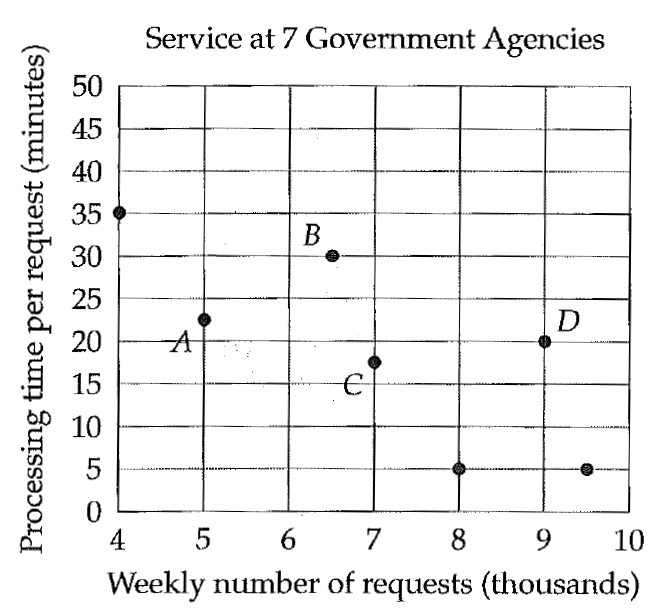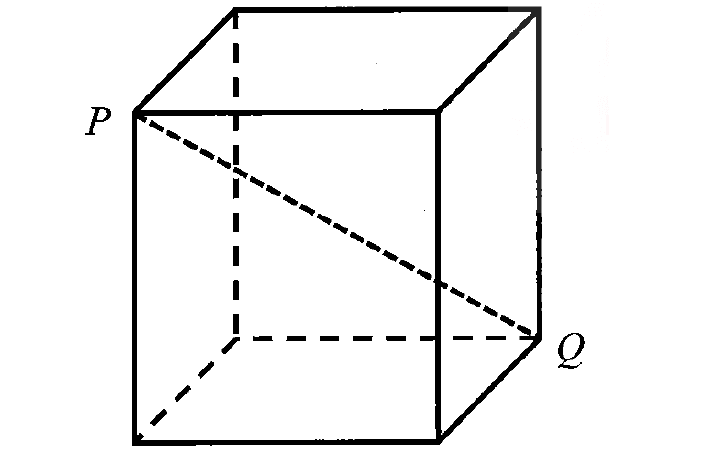VERIFY THE GIVEN POINTS ARE VERTICES OF PARALLELOGRAM WORKSHEET
Examine whether the given points forms a parallelogram.
(i) A(4, 6), B(7, 7) C(10, 10) and D (7, 9)
(ii) A(3, -5), B(-5, -4), C (7, 10) and D (15, 9)
(iii) A (-4, -3) and B (3, 1) and C (3, 6) and D (-4, 2)
(iv) A(8, 4), B(1, 3), C(3, -1) and D (4, 6)
Detailed Solution
Question 1 :
A(4, 6), B(7, 7) C(10, 10) and D (7, 9)
Solution :
Distance Between Two Points (x ₁, y₁) and (x₂ , y₂)
√(x2 - x1)2 + (y2 - y1)2
Length of AB :
Here x1 = 4, y1 = 6, x2 = 7 and y2 = 7
= √(7-4)2 + (7-6)2
= √32+12
= √10
Length of BC :
Here x1 = 7, y1 = 7, x2 = 10 and y2 = 10
= √(10-7)2 + (10-7)2
= √32+32
= √(9+9)
= √18 units
Length of CD :
Here x1 = 10, y1 = 10, x2 = 7 and y2 = 9
= √(7-10)2+(9-10)2
= √(-3)²+(-1)²
= √(9+1)
= √10 units
Length of DA :
Here x1 = 7, y1 = 9, x2 = 4 and y2 = 6
= √(4-7)²+(6-9)²
= √(-3)²+(-3)²
= √(9+9)
= √18 units
Length of opposite sides are equal. So, the given vertices will form a parallelogram.
Question 2 :
Examine whether the given points
A(3, -5), B(-5, -4), C (7, 10) and D (15, 9)
forms a parallelogram.
Solution :
Length of AB :
Here x1 = 3, y1 = -5, x2 = -5 and y2 = -4
= √(-5-3)2 + (-4-(-5))2
= √(-8)2+(-4+5)2
= √(64+1)
= √65 units
Length of BC :
Here x1 = -5, y1 = -4, x2 = 7 and y2 = 10
= √(7-(-5))2+(10-(-4))2
= √(7+5)2+(10+4)2
= √122+142
= √(144+196)
= √340 units
Length of CD :
Here x1 = 7, y1 = 10, x2 = 15 and y2 = 9
= √(15-7)2+(9-10)2
= √82+(-1)²
= √(64+1)
= √65 units
Length of DA :
Here x1 = 15, y1 = 9, x2 = 3 and y2 = -5
= √(3-15)²+(-5-9)²
= √(-12)²+(-14)²
= √(144+196)
= √340 units
Length of opposite sides are equal. So, the given vertices will form a parallelogram.
Question 3 :
Examine whether the given points
A (-4, -3) and B (3, 1) and C (3, 6) and D (-4, 2)
forms a parallelogram.
Solution :
Length of AB :
Here x1 = -4, y1 = -3, x2 = 3 and y2 = 1
= √(3-(-4))2+(1-(-3))2
= √(3+4)2+(1+3)2
= √72+42
= √(49+16)
= √65 units
Length of BC :
Here x1 = 3, y1 = 1, x2 = 3 and y2 = 6
= √(3-3)2 + (6-1)2
= √5²
= 5 units
Length of CD :
Here x1 = 3, y1 = 6, x2 = -4 and y2 = 2
= √(-4-3)2 + (2-6)2
= √(-7)2 + (-4)2
= √(49+16)
= √65 units
Length of DA :
Here x1 = -4, y1 = 2, x2 = -4 and y2 = -3
= √(-4-(-4))² + (-3-2)²
= √(-4+4)² + (-5)²
= √25
= 5 units
Length of opposite sides are equal. So, the given vertices will form a parallelogram.
Question 4 :
Examine whether the given points
A(8, 4), B(1, 3), C(3, -1) and D (4, 6)
forms a parallelogram.
Solution :
Length of AB :
Here x1 = 8, y1 = 4, x2 = 1 and y2 = 3
= √(1-8)² + (3-4)²
= √(-7)² + (-1)²
= √(49+1)
= √50 units
Length of BC :
Here x1 = 1, y1 = 3, x2 = 3 and y2 = -1
= √(3-1)² + (-1-3)²
= √(2)²+(-4)²
= √(4+16)
= √20 units
Length of CD :
Here x1 = 3, y1 = -1, x2 = 4 and y2 = 6
= √(4-3)² + (6-(-1))²
= √1²+(6+1)²
= √1+7²
= √(1+49)
= √50 units
Length of DA :
Here x1 = 4, y1 = 6, x2 = 8 and y2 = 4
= √(8-4)2+(4-6)2
= √42+(-2)2
= √(16+4)
= √20 units
Length of opposite sides are equal. So the given vertices forms a parallelogram
Kindly mail your feedback to v4formath@gmail.com
We always appreciate your feedback.
©All rights reserved. onlinemath4all.com
Recent Articles
-
Digital SAT Math Problems and Solutions (Part - 153)
Apr 29, 25 12:18 PM
Digital SAT Math Problems and Solutions (Part - 153) -
Digital SAT Math Problems and Solutions (Part - 152)
Apr 28, 25 11:54 AM
Digital SAT Math Problems and Solutions (Part - 152) -
Digital SAT Math Problems and Solutions (Part - 151)
Apr 26, 25 11:18 AM
Digital SAT Math Problems and Solutions (Part - 151)

